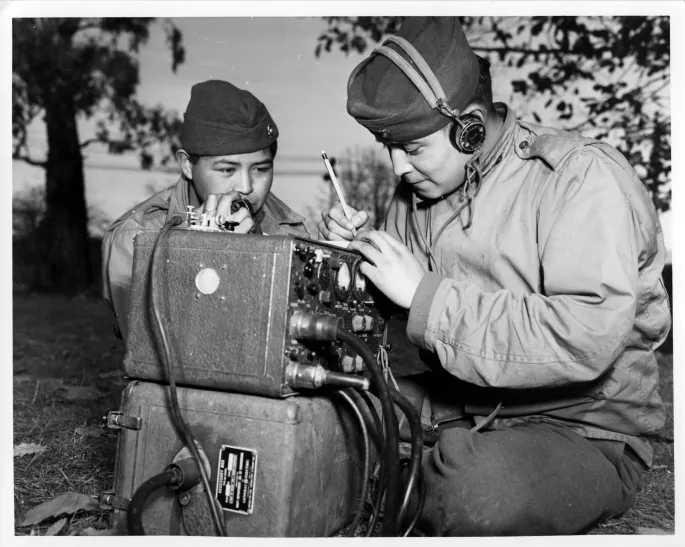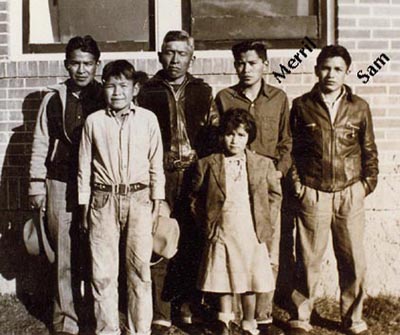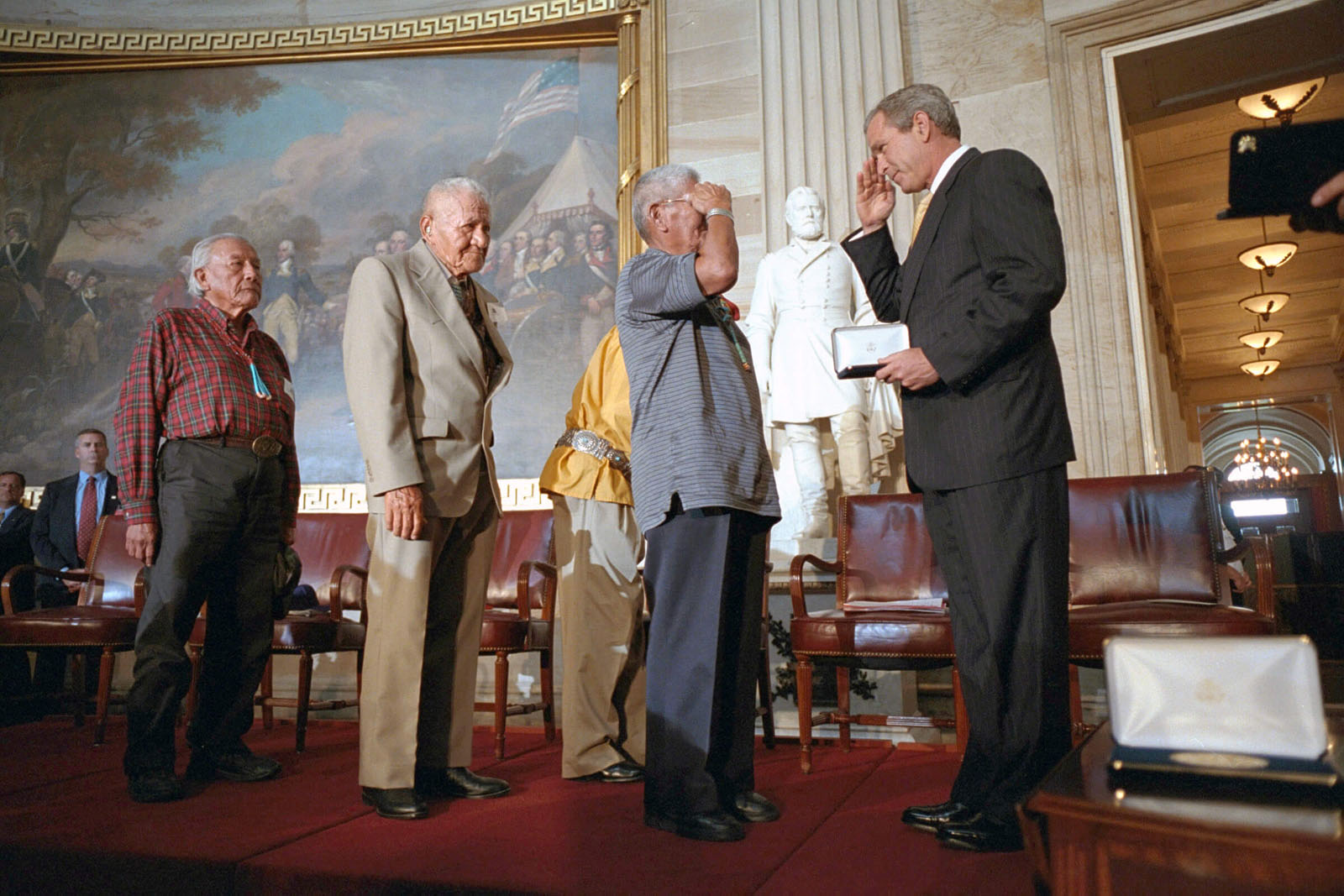November marked the month-long celebration of Native American heritage, and we want to talk about something not enough people know about: the Navajo Code Talkers and how they helped the US to win the War in Japan.
In case you didn’t know…
A code talker is someone employed by the military during wartime to use a little-known language as a means of secret communication.
Navajo is an Athabaskan language (a large family of Indigenous languages of North America) spoken primarily in the southwestern United States on Navajo land.
The concept of using Native American languages on the battlefield actually came about from WWI. In total, more than 50,000 male and female Native Americans from dozens of tribes served. Regiments had experimented with the Native American Choctaw language, (part of the Muskogean language family, spoken by Indigenous people of the Southeastern US) using it as a code against the Germans in many planned attacks. The Japanese managed to crack every code the US used. After WWI, Germany and Japan sent students to study Native American languages, making it impossible to use this coding system during WWII.
When the US entered WWII in the winter of 1941, the idea of using code talkers again seemed to be history. However, one language had been overlooked: Navajo.
Why Navajo?
Navajo was only spoken, not written. It didn’t have an alphabet and has very complex sentence structure and tonal qualities. People outside the nation didn’t know the language because it was so difficult to learn – only 30 non-Navajos were fluent in the language when WWII started.
The man who proposed the idea of using Navajo as a code language and recruited the first 29 Navajo code talkers was Philip Johnston. His parents were missionaries, so he spent his entire life on Navajo land, learning the customs and how to speak the language as a child.
Fun fact: his fluency in the language was so highly regarded that at the age of nine, he was asked to be an interpreter in Washington D.C. to help advocate for Native American rights.
After holding a successful demonstration with himself and four native Navajo speakers, Navajo was accepted as a means to communicate radio messages effectively for the remainder of the war.

Photograph of Navajo Code Talkers Preston Toledo and Frank Toledo relay orders over a field radio in the South Pacific. (Photo source: https://unwritten-record.blogs.archives.gov/2020/12/01/navajo-code-talkers/)
Speaking in code
The military developed two ways to code messages: type one code and type two code.
Type one code was originally created by the first 29 code talkers. When they received a message, what they heard was a string of seemingly unrelated Navajo words. Firstly, they had to translate each Navajo word into its English equivalent. Then, they used only the first letter of the English equivalent in spelling an English word. For example, the Navajo words “wol-la-chee” (ant), “be-la-sana” (apple) and “tse-nill” (axe) all stood for the letter “a”. For “c”, the Navajo word “moasi” (cat) was used. So, to say the word “Navy” in Navajo code would be “tsah (needle) wol-la-chee (ant) ah-keh-di-glini (victor) tsah-ah-dzoh (yucca).”
Type two code was similar to today’s interpreting. A code talker would relay an English message in their native language to the listener on the other end. The person on the other end would translate from the native language into English.
Not all words had to be spelled out letter by letter. The recruits ended up creating over 400 terms for words that didn’t originally exist in the language. They did this by looking at pictures of the military item or term and then coming up with words to describe them in their native language. For example, the code word for ships was “paaki”, which literally translates to “houses on water”. The code word for submarine was “besh-lo” (iron fish) and fighter plane was “dah-he-tih-hi” (hummingbird).

Merril and Samuel Sandoval were brothers and Navajo Code Talkers during World War II. They are pictured here with their father and siblings. Merril died in 2008 and Samuel died in 2022. (Photo source: www.navajo-codetalker.com)
The results
The number of code talkers grew to include over 400 highly trained, bilingual Navajo men as the war progressed. They played a significant role in overtaking Iow Jima island by transmitting over 800 coded messages. They even helped during the D-Day invasion. The code talkers participated in every major Marine operation in the Pacific theatre, giving the Marines a critical advantage throughout the war.
Once the war ended, they quietly returned to their homes. It wasn’t until 1982 that US President Reagan gave these men recognition, declaring August 14 the official “Navajo Code Talker’s Day”. In 2000, US Congress passed a law, signed by US President Clinton, awarding the Congressional Gold Medal to the original 29 WWII Navajo code talkers, and Silver Medals to an additional 300 who served as code talkers. In 2001, US President Bush presented Gold Medals to four of the surviving original code talkers.

The last original code talkers John Brown, Chester Nez, Lloyd Oliver, and Allen Dale June receive their medals from President Bush in 2001. (Photo source: https://americanindian.si.edu/nk360/code-talkers/recognition/)
Not fully declassified until 1968, the Navajo code remains the only oral military code that has never been broken.
According to the Indigenous Language Institute, there were once more than 300 Indigenous languages spoken in the United States, and approximately 175 remain today. They also estimate that without restoration efforts, there will be at most 20 still spoken in 2050.




